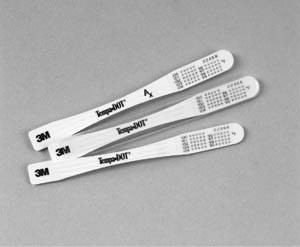No one temperature is normal for all people. Many factors affect body temperature, including:
Age
Exercise
Exercise increases body temperature by increasing our metabolism. A long distance runner might have a body temperature as high as 105.8 degrees Fahrenheit (41 degrees Centigrade) after just finishing a long run.
Hormones – Women usually have greater changes in body temperature than men.

Daily Cycle
During a normal 24-hour day, the body temperature goes up and down (See Graph). Normally the body temperature is lowest between 1:00 and 4:00 am. The temperature rises during the day, to reach its highest point at about 6:00 pm.
Stress
Physical and emotional stress increase body temperature. A person who is anxious will likely have an increase in temperature.
Environment
The outside temperature affects body temperature. Exposure to extreme heat, such as working out in the hot sun, will increase the body temperature. Similarly, if you are out in the cold weather, without proper clothing, the body temperature will fall.
Fever
A fever is an abnormally high body temperature. It is the body’s way to fight infection.
Causes of fever include:
Signs of Fever
This table explains the different ways to measure body temperature and the pros and cons of each.
Route |
Pros |
Cons |
|---|---|---|
|
Oral |
||
|
Easy to insert and accurate |
Do not use if person had mouth surgery, has a history of seizures, or has nasal stuffiness or shaking chills. |
|
|
Wait 15 minutes to take temperature if person has just had anything to eat or drink, has chewed gum or smoked. |
||
|
Rectum |
||
|
Do not use if person has diarrhea, bleeding from rectum, hemorrhoids or recent rectal surgery. |
||
|
Arm pit (axilla) |
||
|
Safe and easy to insert. |
Less accurate than oral or rectal. May be more accurate than oral for persons who breathe with their mouth open or cannot close their mouth tightly around a thermometer. |
|
|
Caregiver must hold thermometer the entire time during measurement. |
||
|
Skin |
||
|
Safe to use |
Do not use if person is sweating. |
|
|
Ear |
||
|
Accurate, rapid measurement |
Earwax distorts the reading. |
|
|
Temporal |
||
|
More accurate than the ear thermometer in infants, and it is better tolerated by infants that the rectal. |
Not as accurate as the rectal temperature. Should only be used for screening. Thermometer is used infrequently in hospitals. |

Digital thermometer:
Use for the mouth, rectum and the armpit. The thermometer is plastic with a narrow temperature probe at one end and a display window at the other. It contains a computer chip. Place the narrow probe in the mouth, rectum or armpit. The thermometer will show a reading in seconds often with an alarm when the reading is complete.

Disposable thermometer:
Use for the mouth and the armpit. Thermometer is a disposable thin strip of plastic with a temperature sensor on one end. The dots change colors at different temperatures. You can take an oral reading in about 60 seconds. A temperature in the armpit will take about 3 minutes. Some can be reused, but most are single use.
Ear thermometer:
Use for the ear. An infrared sensor detects heat from the ear drum. Place the cone shaped sensor in the ear. The thermometer registers a temperature in 2 to 3 seconds after you place it in the ear canal.

Skin thermometer:
Use on the skin. Press the soft disc against the forehead. It digitally displays the temperature. Other skin thermometers have thin pieces of plastic with numbers on them. Place the strip against the person’s forehead and the temperature makes numbers change colors or light up. Skin thermometers are not as accurate as digital or ear thermometers but may be used to determine if a temperature is present. If you get a high reading, recheck the temperature with one of the other thermometers listed above.
Temporal Artery Thermometer:
This has not been shown to be as accurate as the rectal thermometer in children. Not commonly used in adults.
A thermometer has either a Fahrenheit or Centigrade (Celsius) scale. Use the same scale consistently so that you can easily detect an abnormal temperature.
A person develops a heat-related illness when the body’s ability to control temperature becomes overloaded. The body suddenly cannot cool itself by sweating. This occurs most often when a person works or exercises in very hot weather. The body temperature rises rapidly. A hot, humid climate poses the greatest risk.